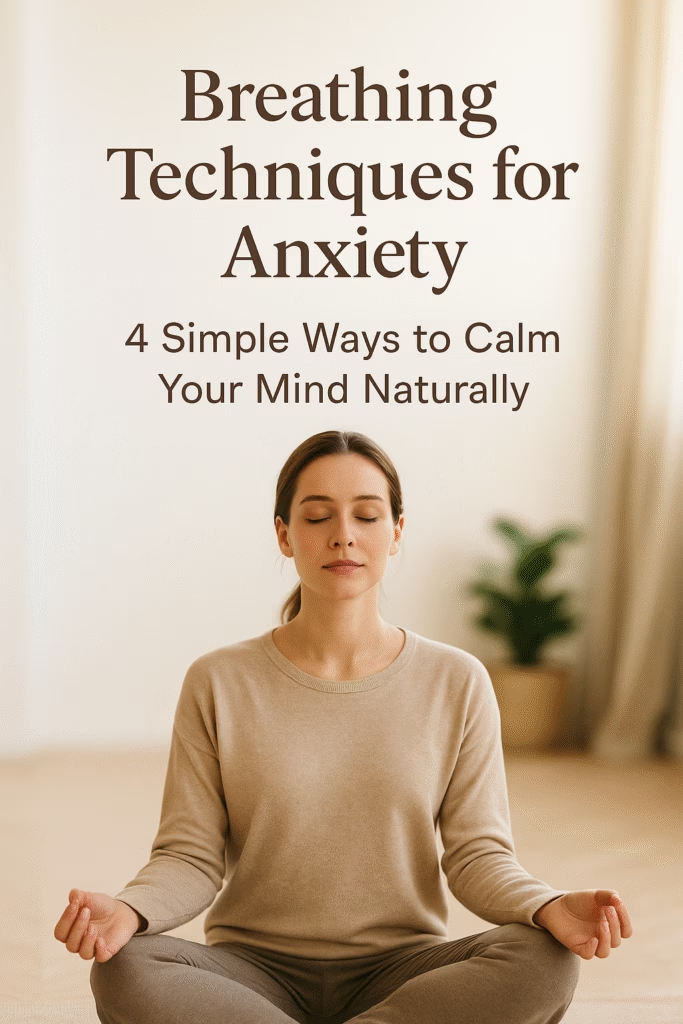As a busy thirty-something with a hectic schedule, I know how easily anxiety can build up. A few years ago, I found myself overwhelmed by work deadlines, family commitments, and constant notifications. It was during a mindfulness workshop that I first heard the phrase breathing techniques for anxiety—and it changed my life.
By learning a few simple exercises, I discovered that I could soothe my nerves in just a few minutes, no matter where I was. In this post, I’m sharing four evidence-based breathing techniques that have helped me regain my calm when I need it most.
Why Breathing Helps Ease Anxiety
Breathing consciously activates your parasympathetic nervous system—the part of your body responsible for the “rest and digest” response. This shifts you out of “fight or flight” mode, lowers stress hormones like cortisol, and slows your heart rate.
According to the Cleveland Clinic, regulated breathing helps ground you, improve focus, and promote relaxation. Each of the practices below offers a slightly different rhythm—try them all and discover which one works best for you.
1. Diaphragmatic Breathing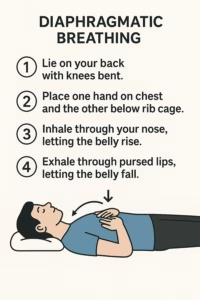
Also known as belly breathing, diaphragmatic breathing helps you move air into the deepest part of your lungs, calming both body and mind. It’s often used in yoga and meditation to activate the relaxation response.
How to do diaphragmatic breathing:
-
Sit or lie down comfortably. Place one hand on your chest and the other just below your rib cage.
-
Inhale slowly through your nose, allowing your belly to rise against your lower hand while keeping your chest still.
-
Purse your lips and exhale slowly through your mouth as your belly falls.
-
Continue for 5–10 minutes, several times a day, to make belly breathing second nature.
This gentle exercise strengthens your diaphragm, stabilizes your heart rate, and can quickly bring you back to a state of calm.
2. Box Breathing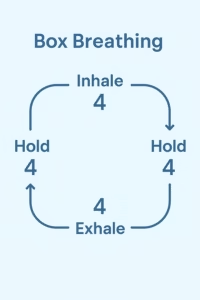
Box breathing, or square breathing, is a simple but powerful technique used by athletes, first responders, and even Navy SEALs to stay calm under pressure. Each phase of the breath—inhale, hold, exhale, hold—is equal in length, creating a balanced rhythm that steadies your mind.
How to do box breathing:
-
Exhale slowly through your mouth to empty your lungs.
-
Inhale through your nose for a count of four.
-
Hold your breath for a count of four.
-
Exhale through your mouth for a count of four.
-
Hold again for a count of four before starting the next round.
Repeat this for three to four rounds, or until you feel centered. Box breathing slows your heart rate, increases oxygen flow, and helps you feel grounded.
To enhance this practice, try sitting on a supportive meditation cushion and diffusing lavender essential oil for a calm, soothing atmosphere.
3. 4-7-8 Breathing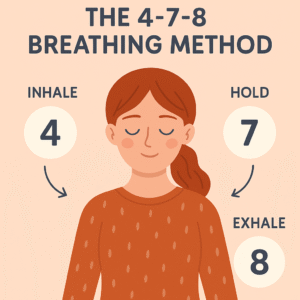
Popularized by integrative medicine expert Dr. Andrew Weil, 4-7-8 breathing uses a longer exhale to activate your body’s relaxation response. It’s especially effective for calming the mind before sleep or during moments of high stress.
How to practice 4-7-8 breathing:
-
Sit or lie down with a straight spine. Rest your tongue lightly behind your upper front teeth.
-
Exhale completely through your mouth with a gentle “whoosh” sound.
-
Close your mouth and inhale quietly through your nose for a count of four.
-
Hold your breath for a count of seven.
-
Exhale through your mouth for a count of eight, again making a soft “whoosh.”
-
This completes one cycle—repeat up to four times or until you feel relaxed.
Extending the exhale helps reduce your heart rate and ease tension. Studies show 4-7-8 breathing can lower anxiety and improve sleep quality.
To make it even cozier, wrap yourself in a weighted blanket or explore more methods in a breathwork book.
4. Alternate Nostril Breathing 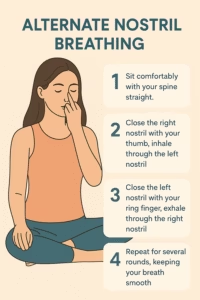
Alternate nostril breathing (Nadi Shodhana) is a yogic practice believed to balance the energy channels on both sides of your body. It calms the nervous system while promoting mental clarity and focus.
How to practice alternate nostril breathing:
-
Sit upright with your left hand resting on your knee.
-
Exhale completely through your mouth.
-
Use your right thumb to close your right nostril and inhale through the left nostril.
-
Close both nostrils and hold your breath briefly.
-
Release your right nostril and exhale through it.
-
Inhale through the right nostril, close it, and exhale through the left.
Repeat for 3–5 minutes, keeping your shoulders relaxed. If you feel dizzy, slow your breath or shorten the holds.
This practice activates the parasympathetic nervous system, reduces stress, and may even improve cardiovascular function. For comfort, sit on a yoga cushion and add a peppermint essential oil diffuser to refresh your senses.
Final Thoughts
Practicing these breathing techniques for anxiety regularly can transform how you respond to stress. Whether you prefer diaphragmatic breathing, box breathing, 4-7-8, or alternate nostril breathing, the key is consistency.
Taking just a few minutes each day to breathe consciously can help you feel calmer, more focused, and in control.
For more mindful habits you can weave into your schedule, read my post on Micro-Moments Wellness, which explores tiny practices that add up to big change.
And remember—breathwork is a powerful tool, but if anxiety interferes with your daily life, it’s important to reach out to your doctor or a mental health professional.

